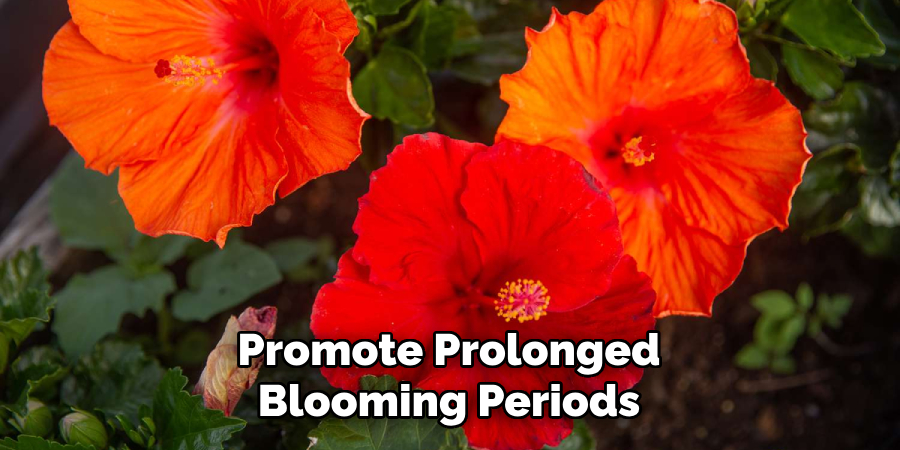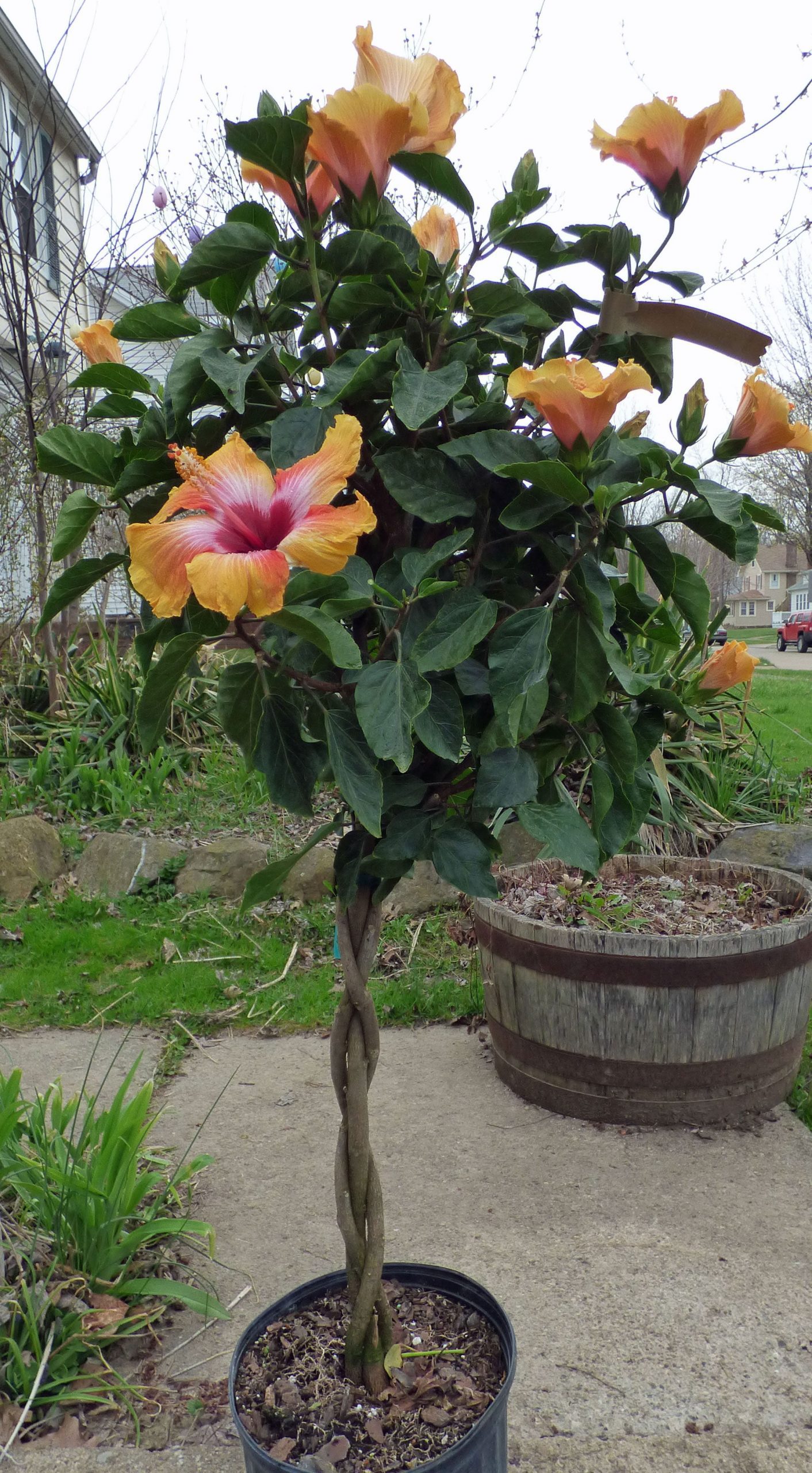To care for a braided hibiscus tree, provide it with regular watering, full sunlight, and well-draining soil. Additionally, prune the tree to promote healthy growth and remove any dead or diseased branches.
Braided hibiscus trees, with their vibrant and showy flowers, make a stunning addition to any garden or patio. However, to ensure their beauty and longevity, these trees require proper care and attention. We will explore the essential steps to follow in caring for a braided hibiscus tree.
By providing the tree with the right amount of water, sunlight, and soil conditions, as well as regular pruning, you can maximize its health and attractiveness. So, let’s delve into the details of how to care for a braided hibiscus tree, ensuring its continuous flowering and lush appearance.

Credit: plantcaretoday.com
How to Care for Braided Hibiscus Tree: Step by Step Guide
Understanding The Braided Hibiscus Tree
Understanding the characteristics and appearance of the braided hibiscus tree is essential for its care. When selecting a location for your tree, consider the need for proper sunlight exposure. Braided hibiscus trees thrive in sunny areas, so choose a spot with at least six hours of direct sunlight.
Avoid areas with excessive shade or where the tree may be blocked by buildings or other obstacles. The tree’s leaves will turn yellow if it doesn’t receive enough sunlight. By providing the right amount of sunlight, you ensure the health and beauty of your braided hibiscus tree.
Watering And Moisture Requirements
Proper care of a braided hibiscus tree involves understanding its watering and moisture requirements. To determine the appropriate watering schedule, consider factors such as the plant’s age, environmental conditions, and soil type. Water the tree thoroughly, but avoid overwatering or allowing the soil to become waterlogged.
It is essential to use well-drained soil for the hibiscus tree to prevent root rot and other water-related issues. The soil should be able to retain moisture while allowing excess water to drain away. Regularly check the soil moisture by inserting your finger into the soil to determine if it is dry or moist.
Adjust the watering frequency accordingly. Remember, providing the right amount of moisture is crucial for the health and growth of your braided hibiscus tree.
Fertilizing For Optimal Growth
To ensure optimal growth and health of your braided hibiscus tree, understanding its nutritional needs is crucial. Selecting the right fertilizer plays a key role in providing the essential nutrients. It is important to maintain the right balance of these nutrients, as excessive or inadequate amounts can adversely affect the tree’s growth.
Assessing the specific requirements of your braided hibiscus tree and choosing a fertilizer that meets those needs is vital. Whether you opt for liquid or granular fertilizer, make sure it contains the necessary elements like nitrogen, phosphorus, and potassium. Regularly fertilizing your braided hibiscus tree will promote strong and vibrant blooms while enhancing its overall health.
Remember to carefully follow instructions for application and dosage, taking into consideration the tree’s age and current condition. By providing adequate nutrition, you can enjoy the beauty of a thriving braided hibiscus tree in your garden.
Pruning And Shaping Techniques
Caring for a braided hibiscus tree involves pruning and shaping techniques to achieve an aesthetically pleasing appearance. One important aspect of pruning is identifying and removing dead or damaged branches. This helps enhance the tree’s overall health. Additionally, pruning also promotes air circulation, which is crucial for the tree’s growth.
By removing overcrowded branches, you create space for fresh air and sunlight to reach the inner parts of the tree. This improves the overall health and vitality of the plant. Regular pruning ensures that the tree maintains its shape and structure, contributing to its visual appeal.
It is essential to follow proper pruning techniques and avoid excessive cutting, as it can harm the tree’s growth. With the right care and attention, your braided hibiscus tree will thrive and become a stunning addition to your garden.
Pest And Disease Control
Pest and disease control is crucial when caring for a braided hibiscus tree. There are several common pests that can affect these trees, including aphids, spider mites, and scale insects. To keep these pests at bay, preventive measures should be taken.
Regularly inspect the leaves for any signs of pests and promptly remove them. Additionally, keeping the tree well-watered and fertilized will help to keep it healthy and less susceptible to pests. It is also important to be able to recognize and treat common diseases that can affect braided hibiscus trees.

Some common diseases include leaf spot, powdery mildew, and root rot. Treating these diseases may involve pruning affected parts, applying fungicides, or making sure the tree has proper drainage. By being proactive in pest and disease control, you can ensure the health and longevity of your braided hibiscus tree.
Winter Care And Protection
Caring for a braided hibiscus tree during winter is crucial for its health and survival. To protect the tree from frost and cold temperatures, several steps should be taken. First, it is important to prepare the tree for the winter months by gradually reducing its water and fertilizer intake.
This helps the tree adjust to the dormant period. Next, providing mulch around the base of the tree helps insulate the roots and retain moisture. Covering the tree with a frost cloth or burlap can also be beneficial, especially during extreme cold spells.
If you have an indoor braided hibiscus tree, it is vital to place it near a sunny window and away from drafts. Additionally, regular pruning and monitoring for pests can help maintain its health during winter. Taking these measures will ensure that your braided hibiscus tree survives and thrives throughout the cold season.
Transplanting And Repotting Guide
Transplanting and repotting a braided hibiscus tree requires careful consideration of various factors. First, assess the tree’s overall health and growth pattern. Evaluate the environmental conditions of the new location, ensuring it has adequate sunlight and well-drained soil. Next, choose the right time for transplantation, preferably during the dormant period in late winter or early spring.
Before proceeding, prepare the new pot or planting site, making sure it is larger and has good drainage. Gently remove the tree from its current pot or ground using proper techniques to avoid damaging the roots. Place the tree in the new location, ensuring it sits upright and at the same depth as before.
Fill the space around the roots with fresh, well-draining soil, firming it gently. Water the tree thoroughly and provide regular care following repotting to support healthy root growth.
Troubleshooting Common Issues
Leaf discoloration and abnormal growth patterns can be common issues when caring for a braided hibiscus tree. These problems can make your tree look unhealthy and unattractive. To troubleshoot leaf discoloration, start by examining the leaves carefully. If you notice yellow or brown spots, it could be a sign of nutrient deficiency or pest infestation.
Treating the tree with a balanced fertilizer and using organic pest control methods can help resolve these issues. Another common problem is wilting or drooping leaves and stems. This is often caused by over or under watering. To overcome this challenge, ensure that you are watering your tree consistently and in the right amounts.
Regularly check the soil moisture levels and adjust your watering schedule accordingly. By addressing these common challenges and providing proper care, you can ensure the health and vitality of your braided hibiscus tree.
Tips For Enhancing Blooming
Caring for your braided hibiscus tree ensures abundant and vibrant flower production. Promote prolonged blooming periods by optimizing various factors. Enhance blooming by providing the right amount of sunlight and maintaining appropriate soil moisture levels. Proper pruning and fertilization are also essential for optimal flower production.

Ensure your tree has enough space to grow and establish a strong root system. Protect it from extreme weather conditions and pests. Regularly check and remove any dead or diseased branches. By following these tips, you can enjoy a beautiful and thriving braided hibiscus tree with stunning blooms throughout the year.
Carefully nurture and maintain your tree for maximum flower production.
Frequently Asked Questions On How To Care For Braided Hibiscus Tree
How Often Should I Water My Braided Hibiscus Tree?
Water your braided hibiscus tree deeply once the top inch of soil is dry. Generally, it needs watering once or twice a week, but it may vary depending on the weather conditions and humidity levels. Ensure the soil is well-drained to prevent root rot.
How Can I Fertilize My Braided Hibiscus Tree?
Feed your braided hibiscus tree with a balanced, water-soluble fertilizer every two weeks during the growing season. Dilute the fertilizer according to the package instructions and apply it to the soil around the tree. Avoid fertilizing during the winter months when the tree is dormant.
How Do I Prune My Braided Hibiscus Tree?
Prune your braided hibiscus tree in early spring before new growth starts. Remove any dead or damaged branches, as well as those that cross or rub against each other. Trim back the remaining branches to maintain a desired shape and size.
Make clean cuts just above leaf nodes.
Can I Grow A Braided Hibiscus Tree Indoors?
Yes, you can grow a braided hibiscus tree indoors, but it requires bright, indirect sunlight. Place the tree near a sunny window or use artificial grow lights. Provide consistent temperatures between 60-85°f (15-29°c) and maintain high humidity levels through regular misting or using a humidifier.
How Do I Prevent Pests And Diseases On My Braided Hibiscus Tree?
To prevent pests and diseases on your braided hibiscus tree, inspect the leaves regularly for any signs of damage or infestation. Treat any issues promptly with organic insecticides or fungicides. Avoid overwatering, as it can lead to root rot. Maintain good air circulation around the tree to minimize disease risks.
Conclusion
Taking care of a braided hibiscus tree may seem challenging at first, but by following the right tips and techniques, you can ensure its health and beauty for years to come. Remember to provide adequate sunlight, water, and soil conditions suited to the plant’s needs.
Regular pruning will help promote new growth and maintain the desired shape of the tree. Use organic fertilizers for nourishment, and be mindful of pests that can harm the tree. By being attentive to its needs and implementing proper care, your braided hibiscus tree will flourish with vibrant foliage and stunning blooms.
By following these guidelines, you can enjoy the beauty of your braided hibiscus tree and create an inviting outdoor space that will be the envy of all your neighbors. Happy gardening!

